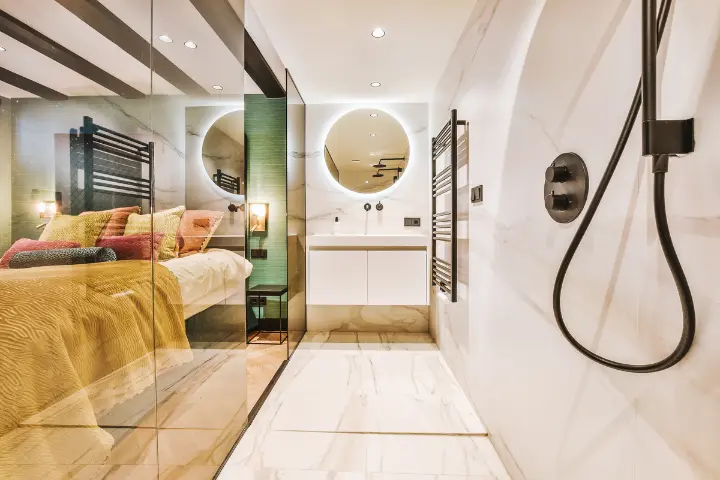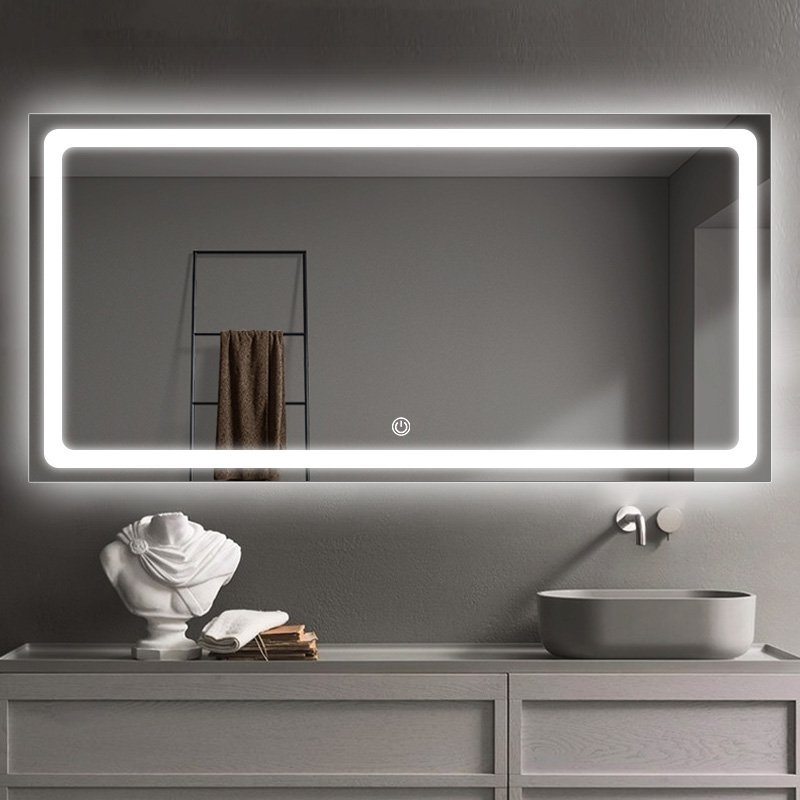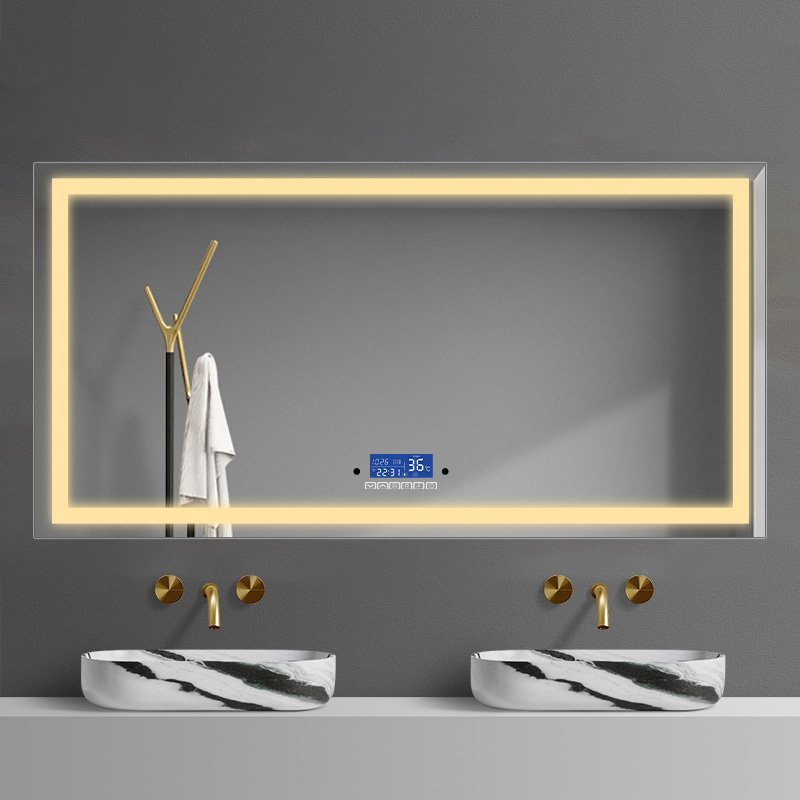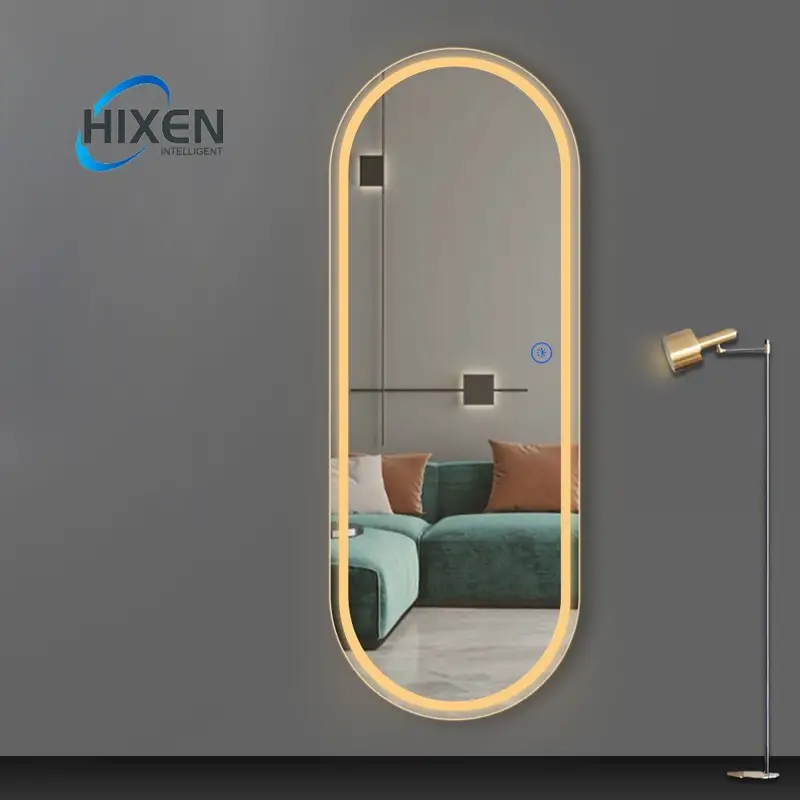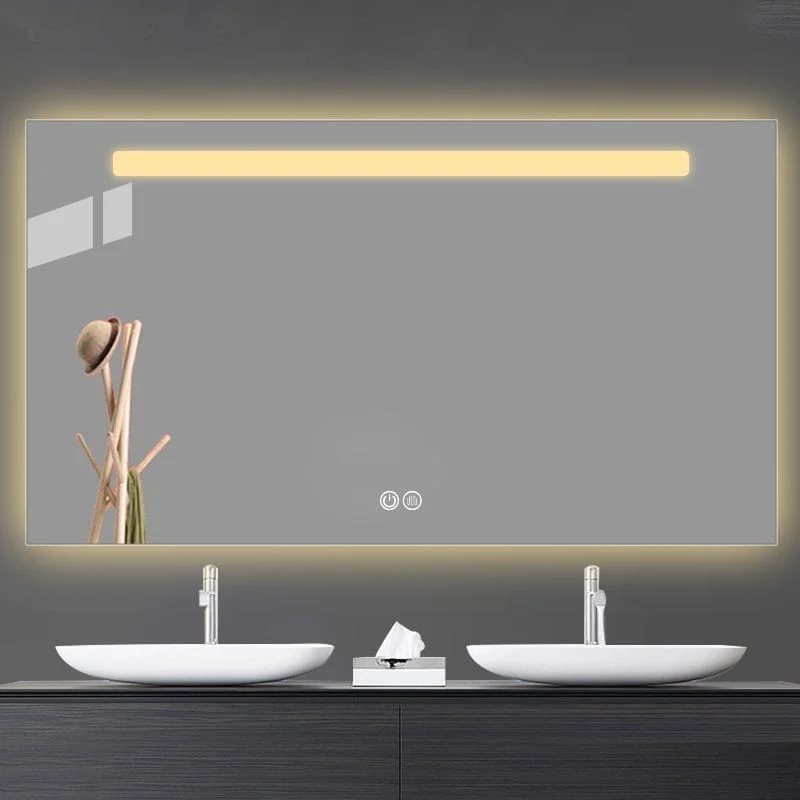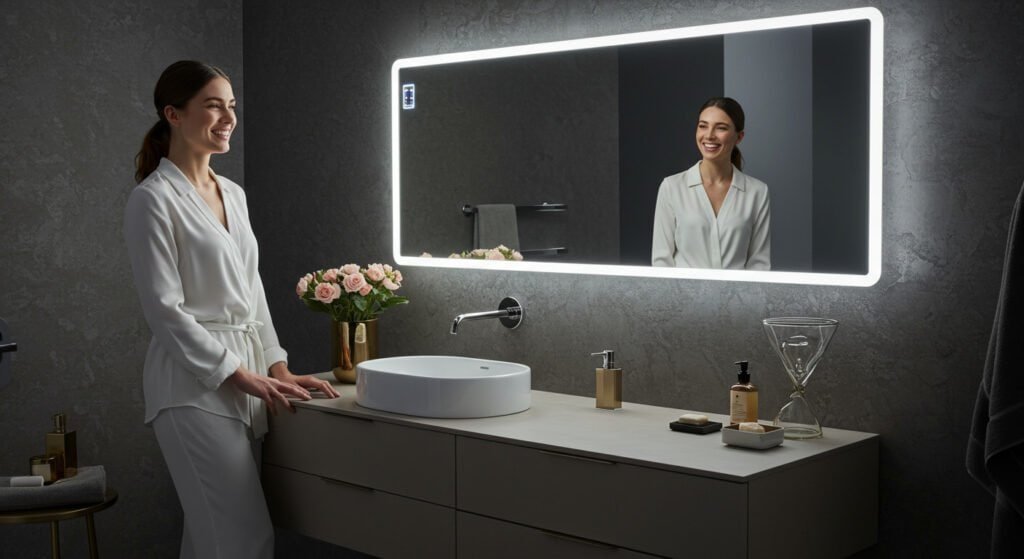|
الحصول على الخاص بك الثالوث الصوت اللاعب جاهز...
|
Sourcing LED mirrors for professional projects presents unique challenges. Inconsistent quality and substandard manufacturing processes can lead to costly replacements and dissatisfied customers. So how do we select a bathroom mirror manufacturer and employ strict quality control measures when working with them?
To secure the highest quality control for custom LED mirrors, a multi-faceted approach involving supplier audits, detailed in-process checks, third-party testing, and verified packaging protocols is essential. Collaborating with an experienced LED mirror manufacturer can minimize risks and enhance the reliability of your products.
Let’s break down these crucial quality control steps to make your investment in custom LED mirrors both smart and secure.
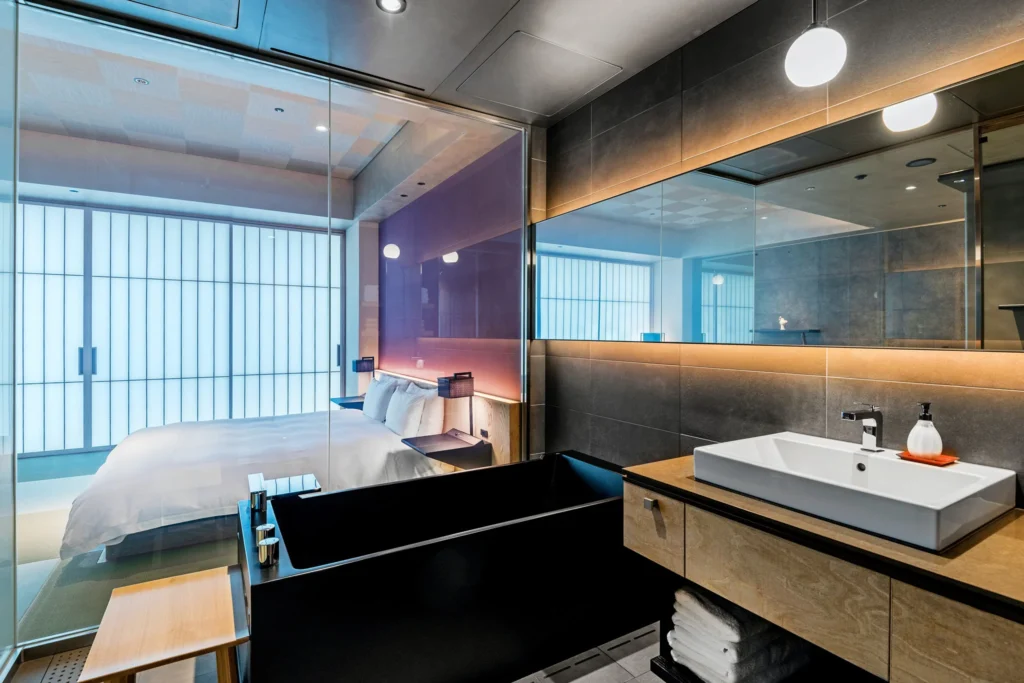
1. Supplier Qualification is Key
Ensuring the credibility and reliability of your supplier is the first step in the quality control process. A thorough qualification process starts with evaluating the manufacturer’s certifications, مثل ISO 9001, which indicates that a factory adheres to quality management standards. Checking certifications and reading client testimonials are essential to gauge the manufacturer’s reputation. Experienced suppliers often have certifications and can provide references to past successful projects, which solidifies trust.
A supplier audit can involve reviewing production capabilities, factory conditions, and the supplier’s commitment to quality. This step is particularly crucial when working with الشركات المصنعة مرآة الحمام from developing regions. Visiting the factory, if feasible, or employing a trusted third-party inspection company ensures transparency.
Supporting Insights: Research shows that suppliers with ISO certifications have fewer defect rates and higher customer satisfaction【source: ISO Survey】. These statistics underline the importance of verifying supplier standards.
2. Importance of In-Process Quality Checks
The production stage is where quality truly takes shape. Relying solely on final product inspections can lead to overlooking issues that develop during manufacturing. Implementing quality checks at each production stage, such as raw material inspection, component assembly, and LED installation, significantly reduces the chances of defects. على سبيل المثال, ensuring that the LEDs in a مرآة LED مخصصة emit consistent brightness across the surface prevents user dissatisfaction.
Key testing elements include:
- Color Consistency: Verifying that the color temperature aligns with the product specifications.
- Defogging Functionality: Testing the anti-fog feature ensures that it activates efficiently.
- LED Mirror Touch Sensor: Ensuring responsiveness is crucial to avoid operational problems down the line.
Deep Dive: Quality checks during production allow for immediate adjustments, saving time and costs in the long run. A case study from a leading الشركة المصنعة للمرآة بقيادة الولايات المتحدة highlighted that proactive checks reduced defect rates by 25%, improving customer satisfaction and cutting down on rework expenses.
Supporting Insights: According to a report by the American Society for Quality (ASQ), proactive in-process checks reduce rework and scrap costs by up to 30%【source: ASQ Report】.
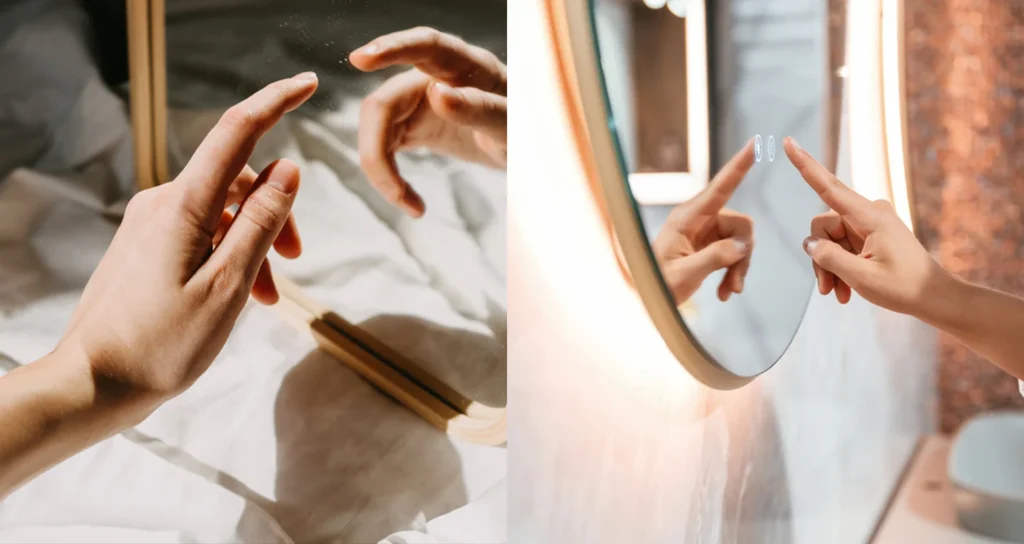
3. Role of Third-Party Testing
While internal inspections are vital, having an unbiased, external assessment adds a layer of credibility to the quality control process. Third-party testing agencies, such as UL or TUV, specialize in evaluating the safety and performance of products like LED mirrors. These organizations perform tests that manufacturers might overlook or under-prioritize. ل مرايا مضاءة intended for bathroom use, testing for water resistance and electrical safety is paramount.
Benefits of third-party testing include:
- Enhanced Trust: Customers and stakeholders often prefer products verified by independent agencies.
- Regulatory Compliance: Ensures products meet both domestic and international safety standards.
Case Study: In a recent compliance audit, a major مصنع مرآة الصمام partnered with TUV to ensure their mirrors met stringent European safety standards, resulting in improved product acceptance rates in the EU market.
Supporting Insights: Reports show that third-party verified products are 20% more likely to meet safety and performance benchmarks【source: SGS Quality Assurance】.
4. Packaging and Transportation Measures
The final step in maintaining the quality of personalised LED mirrors is ensuring they are packaged and transported securely. A well-thought-out packaging process involves custom foam inserts, shock-absorbent materials, and tamper-proof seals. These measures prevent physical damage during shipping, especially for international deliveries where products are more vulnerable.
Packaging Essentials:
- طبقات واقية: Using multiple layers of protective padding minimizes the impact of handling.
- Temperature Resistance: للمرايا LED ذات المكونات الكهربائية, temperature-resistant packaging helps maintain the integrity of the product during transit.
Real-World Example: A global supplier of المرايا الخلفية found that investing in specialized packaging reduced breakage rates by 40%, leading to fewer return claims and higher customer satisfaction.
Supporting Insights: Research from the Journal of Packaging Technology shows that optimized packaging can decrease damage rates by up to 40% during long-distance transportation【source: Journal of Packaging Technology】.
How to Check Quality of LED Bathroom Mirrors?
Performing a quality check on the final product is a necessary step before approving the mirror for distribution or installation. Start by visually inspecting the mirror for any physical defects, such as scratches, uneven edges, or inconsistent LED brightness. Ensure that the mirror’s surface is free from blemishes and the LED backlighting distributes evenly.
Functional tests should include:
- Defogging Test: Activate the anti-fog feature and check for clear visibility.
- Sensor Test: Verify that the LED Mirror Touch Sensor responds smoothly without delay.
- Brightness Levels: Test different brightness settings to ensure full functionality.
These inspections help you detect potential LED bathroom mirror problems before they escalate into larger issues that could harm your reputation.
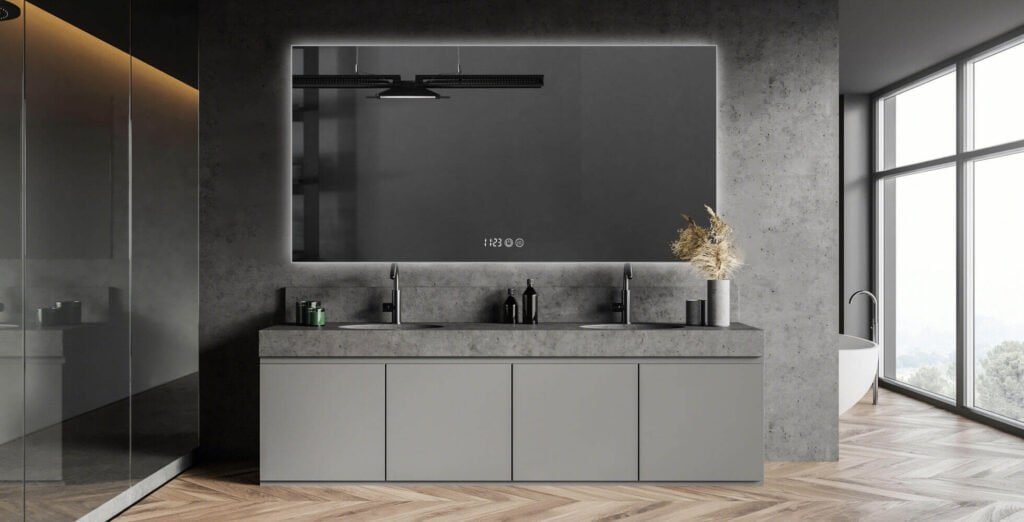
Common LED Bathroom Mirror Problems and Their Solutions
Even with top-tier quality control, issues can occasionally arise. Some of the most common problems with مرايا الحمام LED include sensor malfunctions, أضواء وامضة, and connectivity issues with integrated Bluetooth or other tech features. To troubleshoot these issues:
- Sensor Malfunctions: Check for loose wiring or misalignment of touch-sensitive components.
- Flickering Lights: Inspect for power supply inconsistencies or replace faulty LEDs.
- Connectivity Problems: Ensure that any Bluetooth module or similar feature has been tested and is compatible with various devices.
Detailed Insight: Many problems can be mitigated by choosing a manufacturer that prioritizes component testing at the assembly level. This proactive step reduces the frequency of issues that users face post-installation.
Supporting Insights: Industry data highlights that 50% of touch sensor failures result from misaligned installation during assembly【source: Electrical Safety Journal】.
How to Identify High-Quality Mirrors?
Understanding what differentiates a high-quality mirror from an average one is essential for discerning buyers. Key indicators of premium quality include thick glass, a robust frame, and an anti-corrosive coating that prevents long-term damage. The LED system itself should be designed to provide consistent, non-flickering light that mimics natural light.
Features to Look For:
- Multiple Coatings: Anti-corrosive and reflective coatings enhance durability.
- Polished Edges: Signify professional manufacturing and add to safety.
- Uniform Lighting: Indicates high-quality LED placement and circuitry.
Mirrors that meet these criteria are more likely to provide a superior user experience and last longer, making them a worthwhile investment.
Supporting Insights: Reports from Consumer Reviews on home products show that mirrors with polished, multi-layer coatings last up to 50% longer than those without【source: Consumer Reports on Home Products】.
5 Common LED Bathroom Mirror Problems
Understanding typical issues with LED mirrors helps in preemptive quality assurance. Frequent problems include unresponsive touch sensors, أضواء وامضة, non-functional defoggers, uneven lighting, and electrical issues. Each problem requires targeted quality checks. على سبيل المثال, testing the LED Mirror Touch Sensor during production can mitigate future failures.
In-depth Solutions:
- Unresponsive Sensors: Verify sensor alignment and wiring.
- Flickering Lights: Ensure stable power connections and test the LED driver.
- Defogger Issues: Confirm that heating elements work as designed.
- Lighting Disparities: Test for even distribution and brightness levels.
- Electrical Failures: Run comprehensive safety checks on all circuits.
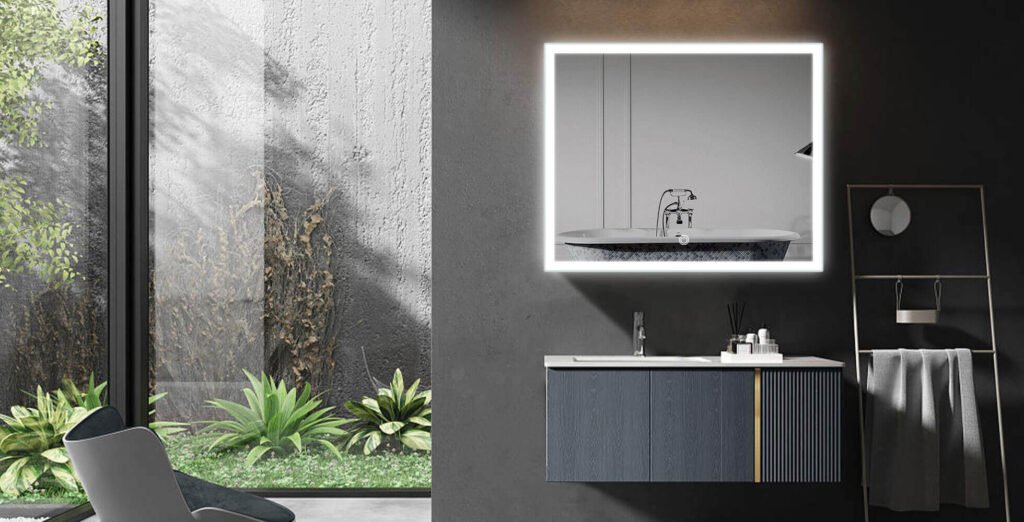
How to Tell if a Mirror is High Quality?
Identifying a high-quality mirror requires close inspection. A quality mirror features thick, polished glass, anti-corrosion coatings, and consistent reflective properties. LED components should be energy-efficient and provide uniform lighting.
Checklist for Quality:
- Glass Thickness: Indicates durability.
- Anti-corrosive Coating: Prevents tarnishing and extends lifespan.
- Polished Edges: Reduce risk of chipping and increase safety.
Deep Dive: Custom LED mirrors with even backlighting and robust frames signal high craftsmanship, which is essential for both commercial and residential installations.
Why is the Touch Sensor Not Working on My LED Mirror?
An unresponsive touch sensor can stem from several issues. Common causes include poor alignment, power interruptions, or hardware malfunctions.
Troubleshooting Steps:
- Check Power Source: Ensure the mirror receives stable electricity.
- Inspect Sensor Alignment: Misaligned sensors may not register touch correctly.
- Replace Malfunctioning Components: If issues persist, replacing the touch sensor is necessary.
Detailed Analysis: Integrating sensors tested in the production process can significantly lower the chance of failure. Reliable LED LED Mirror الشركات المصنعة will incorporate rigorous sensor checks.
Are LED Vanity Mirrors Worth It?
LED vanity mirrors offer numerous benefits that justify their investment. They are energy-efficient, customizable, and provide excellent lighting that mimics natural light. Modern mirrors often come with features such as touch controls, defoggers, and adjustable brightness levels.
Advantages:
- Energy Savings: Use less power compared to traditional lighting.
- Custom Features: Options for personalization to meet user needs.
- Long Lifespan: High-quality LED systems are built to last.
خاتمة: Choosing a مرآة LED شخصية from a trusted source guarantees a product that enhances daily routines and provides excellent value.
Why Has My LED Bathroom Mirror Stopped Working?
Mirror failures can be frustrating but often have straightforward solutions. Common reasons include power supply problems, wiring issues, or malfunctioning LED drivers.
Quick Fixes:
- Inspect Power Connections: Ensure the mirror is connected properly.
- Check for Loose Wires: Re-secure any displaced wires.
- LED Driver Replacement: A faulty driver should be swapped out for a functioning one.
Case Study: أ مرآة بإضاءة خلفية from a reliable manufacturer will typically include built-in safeguards to minimize the risk of sudden malfunctions.
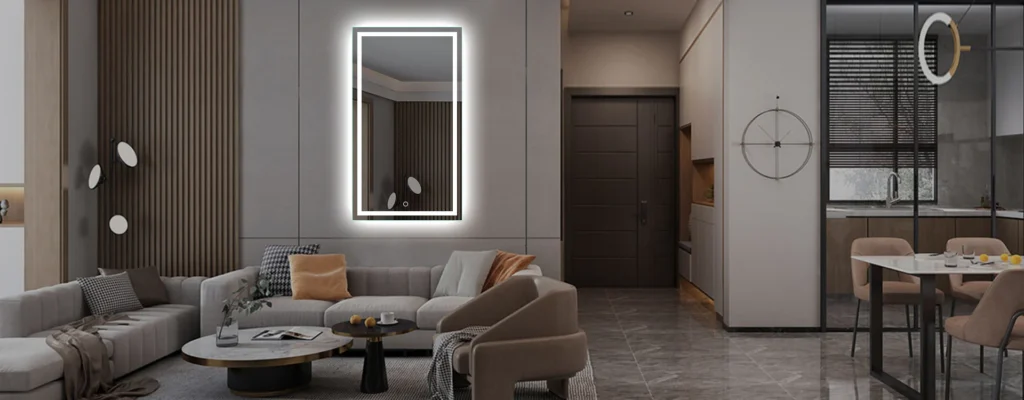
Why Is My LED Light Sensor Not Working?
A faulty LED light sensor can compromise a mirror’s functionality. Reasons range from sensor misalignment to internal wiring issues.
Repair Tips:
- Align the Sensor: Adjust it to ensure optimal responsiveness.
- Test Connections: Inspect for disruptions in the circuit.
- Replace Damaged Sensors: If basic troubleshooting fails, a replacement may be necessary.
Expert Tip: Bathroom mirror manufacturers often incorporate sensor testing to avoid these post-installation issues.
How to Fix a Touch Light Mirror?
Restoring a touch light mirror to working order is a straightforward process. أولاً, check the power source and ensure there are no loose connections.
Step-by-Step Guide:
- قم بإيقاف تشغيل السلطة: Always work safely.
- Inspect Wiring: Look for any detached or frayed wires.
- Test the Sensor: Check the touch sensor’s alignment and functionality.
- Replace Parts if Needed: Swap out faulty components.
Maintenance Insight: Regular maintenance and choosing a مصنع مرآة الصمام that emphasizes quality can prevent such issues.
What Does Mirror Quality Mean?
The term “mirror quality” refers to the construction and durability of the product. High-quality mirrors are defined by clarity, structural integrity, and the robustness of their coatings. For LED mirrors, consistent lighting and durable electrical components are essential.
Key Indicators:
- Clarity: Free of distortions.
- Reflective Coating: Typically uses silver for premium mirrors.
- متانة: Reinforced frames and quality glass contribute to longevity.
What is High Quality vs Low Quality Mirror?
The primary difference lies in the materials and manufacturing processes used. High-quality mirrors have superior glass, multiple protective coatings, and high-grade LED components. Low-quality mirrors may skimp on these elements, leading to quicker wear and potential defects.
Comparison Points:
- Materials Used: Premium glass versus thinner, less durable options.
- Coatings: Anti-corrosive versus minimal or no coating.
- LED Features: High-quality mirrors use LEDs that offer consistent light without flickering.

What is the Quality of a Good Mirror?
A good mirror combines durability, الوضوح, and consistent lighting. A mirror of superior quality will include thick glass, polished edges, and reliable LEDs that offer even, bright light. The frame and mounting must be sturdy to withstand long-term use.
What is the Difference Between Premium Quality and Authentic Quality?
“Premium” often implies enhanced features and materials, while “authentic” refers to traditional, high-standard practices. Premium quality mirrors may have additional functionalities like defogging and Bluetooth speakers. Authentic quality ensures core standards such as durability and clarity.
Features of Premium Quality:
- Multiple Light Settings: Customizable color temperature.
- Integrated Features: Touch sensors, إزالة الضباب, وأكثر.
How Does a Touch Screen Mirror Work?
A touch screen mirror uses embedded sensors that react to touch. These sensors are connected to the mirror’s LED system and control various functions such as brightness and defogging.
Functionality Breakdown:
- Capacitive Sensors: Detect changes in electrical charge to register touch.
- Microcontrollers: Process the touch signals and execute commands.
- Features Triggered: Adjust lighting or turn on the defogger.
Why Is My Electric Mirror Adjustment Not Working?
Electric mirror adjustments can stop working due to mechanical or electrical issues. Common problems include damaged control modules or worn-out motors.
Troubleshooting Guide:
- Check Motor Functionality: Ensure it operates smoothly.
- Inspect Wiring: Verify all connections are intact.
- Replace Faulty Parts: If necessary, replace the damaged components.

خاتمة:
Ensuring the quality of custom LED mirrors involves a strategic and multi-step approach, from vetting suppliers and implementing in-process checks to employing third-party testing and securing transportation. Following these best practices not only ensures high-quality mirrors but also builds trust with your clients, enhancing your business’s reputation and profitability.
Implementing a comprehensive quality control process when sourcing and inspecting custom LED mirrors is essential for ensuring durability and performance. By understanding common issues and knowing how to identify quality features, you can make informed purchasing decisions, enhancing user satisfaction and business success.
Evidence Sources:
- ISO Survey for supplier certification data.
- American Society for Quality (ASQ) for in-process checks.
- SGS Quality Assurance for third-party testing statistics.
- Journal of Packaging Technology for packaging insights.
- Electrical Safety Journal for sensor malfunction issues.
- Consumer Reports on Home Products for quality differentiation analysis.

